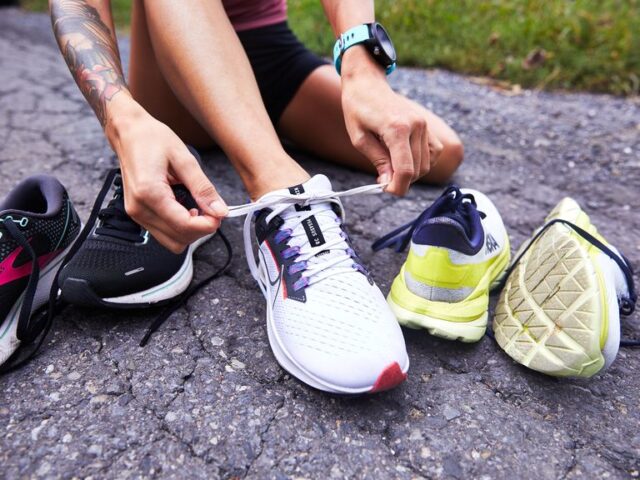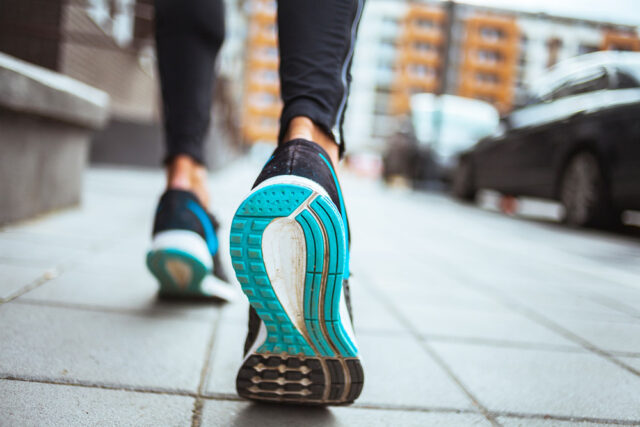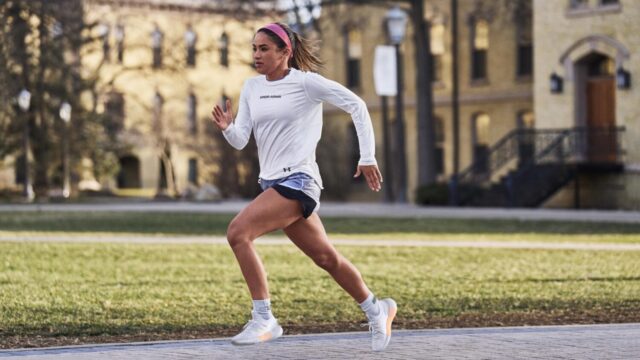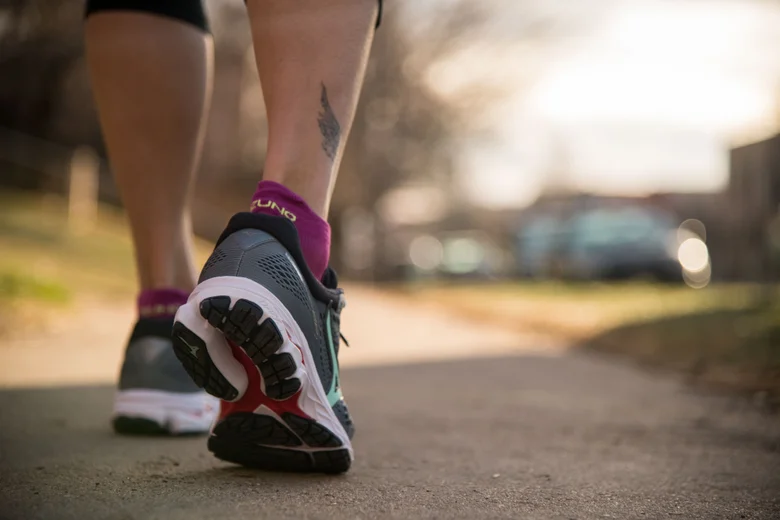
For both seasoned marathoners and casual joggers, selecting the ideal running shoe is paramount. Specifically for women, with the vast array of options available, the right choice can empower them to effortlessly cross that finish line or might leave them struggling with every step. But it’s not just about the brand or the trendy design; the right running shoe is intricately linked to enhancing performance, ensuring lasting comfort, and most crucially, safeguarding against potential injuries. Through this comprehensive guide, we’re taking a holistic approach to demystify the process of choosing the ultimate women’s running shoe, so every stride you make is not just in style, but also provides utmost safety and support.
Understand Your Foot Type

The foundation of an effective running experience lies in understanding one’s foot type. Though each foot tells a unique story, arch types generally categorize them into three: neutral, flat, or high arch. So, why this classification? Simply put, the type of your foot directly dictates how your body weight disperses while running. This weight distribution, in turn, indicates the kind of shoe that would offer the best support.
Neutral Arch: A hallmark of a well-balanced foot, runners with this type usually display a moderate, semi-curved footprint. Thus, shoes designed with medium arch support seamlessly cater to their needs.
Flat Arch: Characterized by an inward roll of the foot upon hitting the ground, a condition termed as overpronation, these feet require special attention. Stability shoes, engineered to counter this inward motion, provide the ideal support structure.
High Arch: For those with a high arch, the foot has a tendency to roll outwards, or underpronate. Shoes with enhanced cushioning are a necessity to effectively absorb the impact, ensuring stability.
Choosing the Right Shoe Size

The adage “size matters” is profoundly true when discussing women’s running shoes trainers. Wearing shoes that are either too snug or too spacious can lead to a host of problems ranging from the annoying blisters to debilitating long-term injuries. It’s advisable to measure your foot size towards the evening, accounting for the slight swelling that occurs through the day. And don’t just try one shoe – both feet can differ slightly in size. Additionally, consider the thickness of the socks you plan to wear. Ideally, there should be a gap equivalent to a finger’s width at the front for unhindered toe movement. The heel region should grip comfortably, devoid of any slippage. Proper sizing transcends mere foot comfort; it’s a proactive measure against potential injuries.
Types of Running Shoes
One’s running style, combined with personal biomechanics, necessitates specific shoes. However, broadly speaking, there are categories each shoe falls into:
Neutral Shoes: Best suited for individuals with a consistent gait pattern, these shoes delicately balance cushioning and support to provide a comfortable running experience.
Stability Shoes: Specifically crafted for overpronators, these shoes incorporate a sturdy midsole. This design feature actively works to curtail the excessive inward roll of the foot during runs.
Motion Control Shoes: Tailored for individuals with severe overpronation tendencies, these shoes outclass stability shoes in terms of the level of support they provide, ensuring the foot remains in a neutral position throughout.
Consider Terrain and Running Surface

The surface you choose to run on significantly influences the type of shoe required. Road runners, often covering long distances on asphalt or similar surfaces, benefit from lightweight shoes enriched with additional padding to counter the hard surface. In contrast, trail runners, navigating uneven terrains and potential obstacles, should prioritize shoes endowed with superior traction and enhanced stability features. Meanwhile, those who frequent tracks for sprints or short-distance runs would fare best with shoes that are not only lightweight but also facilitate quick off-the-mark acceleration.
Cushioning and Support
Cushioning in running shoes isn’t a mere luxury; it’s a strategic component that shields your feet from the relentless pounding during runs. Yet, it’s not about inundating the shoe with cushion; it’s more about calibrating the cushioning to align with your running needs. For instance, a sprinter aiming for short, fast bursts might lean towards shoes with minimal cushioning, offering a closer ground feel and quicker responsiveness. In stark contrast, long-distance runners, such as those tackling marathons, often gravitate towards shoes with more robust cushioning. This ensures sustained comfort across those taxing miles, reducing the risk of foot fatigue.
Pronation and Gait Analysis

At the heart of effective running is the understanding of pronation – the foot’s natural inward rolling post-landing. While a certain degree of pronation is both natural and beneficial, extremes can result in undue stress on other body parts. A detailed gait analysis provides insights into an individual’s pronation patterns. Such assessments are invaluable, guiding runners towards shoes that cater to their unique biomechanics. Nowadays, many specialty running stores offer gait analysis services, ensuring that runners not only invest in the right shoe but also significantly lower their injury risks.
Breathability and Comfort
Ask any seasoned runner about shoe must-haves, and breathability invariably tops the list. A shoe that circulates air effectively prevents overheating, providing a comfortable foot environment. Modern designs, often incorporating mesh uppers or other ventilated materials, offer this breathability. It’s not just about temperature regulation; it’s also about moisture management. Running shoes that wick away sweat dramatically reduce the possibility of blisters, ensuring that long runs remain enjoyable, rather than becoming an exercise in endurance.
Durability and Longevity

The lifespan of a running shoe isn’t infinite. Even those constructed with the finest materials have an expiration date. While high-quality materials and craftsmanship do ensure a more extended period of efficient service, most running shoes typically have a life ranging between 300-500 miles. Beyond this, they might lose their structural integrity or cushioning effectiveness. It’s crucial for runners to remain vigilant, monitoring signs of wear, especially uneven wear, and replace shoes proactively, ensuring both performance and safety aren’t compromised.
Style and Aesthetics
Performance is vital, but who said you can’t run in style? The modern runner seeks the perfect amalgamation of functionality and aesthetics. Thankfully, the current running shoe market is flooded with options that don’t just offer peak performance but also look incredibly chic. Whether it’s vibrant color combinations, sleek designs, or trendy patterns, runners can express their personal style while ensuring their feet get the best support.
Budget Considerations

While it’s tempting to associate quality with price, it’s essential to recognize that excellent running shoes can be found across various price brackets. Brands renowned for quality like ASICS and New Balance frequently introduce models that, while being budget-friendly, don’t skimp on the essential features. A strategic approach, including sales and discounts, can often land you a premium pair without the premium price.
Maintenance and Care
A well-maintained shoe not only looks good but also functions optimally for a more extended period. Simple practices, such as cleaning them gently with a brush or cloth and avoiding harsh machine washes, can prolong their life. Storing them in a dry, cool spot away from direct sunlight prevents material degradation. And, as a final note, while maintenance is crucial, it’s equally essential to recognize when it’s time to retire a pair, ensuring that your feet always get the support they deserve.









